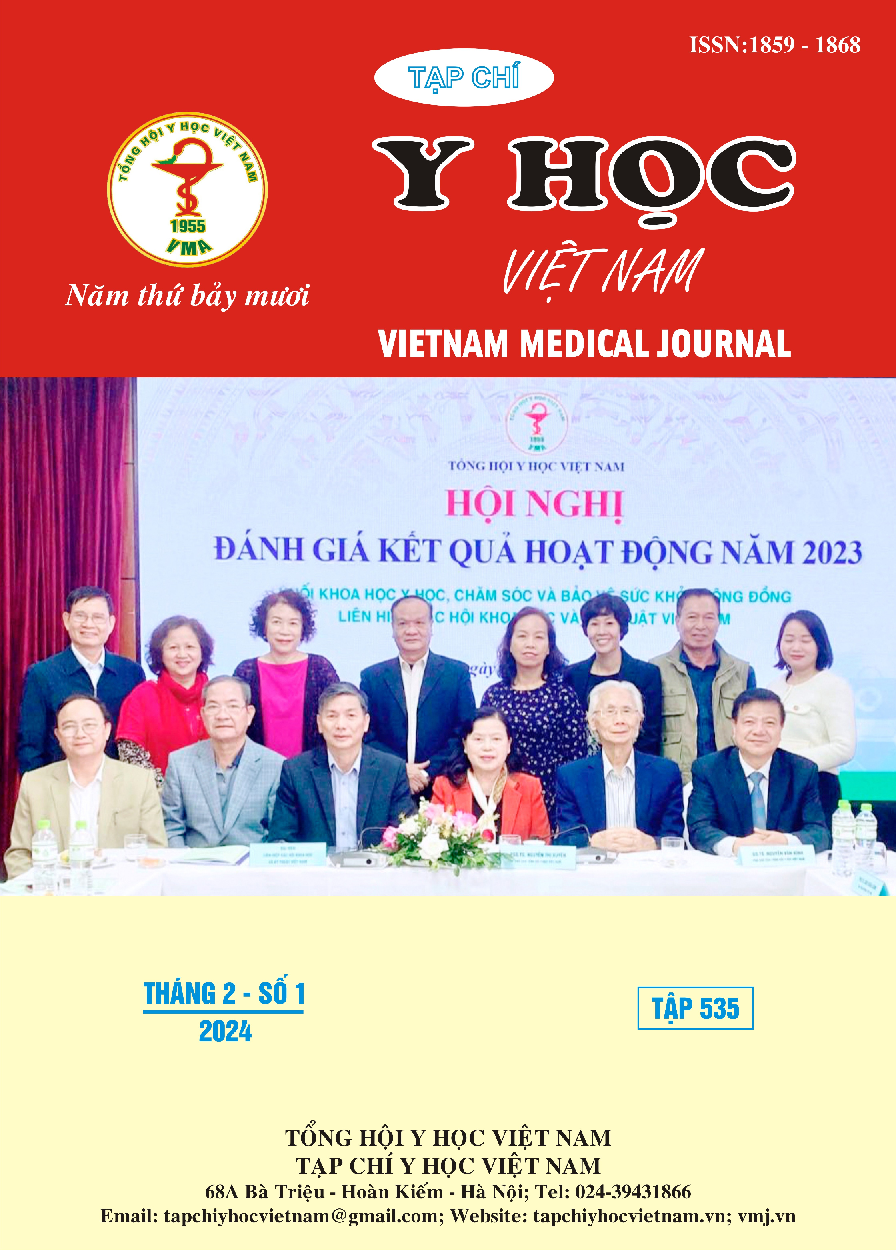PREVALENCE OF LEFT ATRIAL APPENDAGE THROMBUS ON TRANSESOPHAGEAL ECHOCARDIOGRAPHY IN THE ELDERLY WITH ATRIAL FIBRILLATION
Main Article Content
Abstract
Objectives: To determining the rate of left atrial appendage thrombus in elderly patients and investigating the clinical and subclinical characteristics between the two groups with and without left atrial appendage thrombus. The correlation between echocardiography and left atrial appendage thrombus also be investigated. Methods A cross - sectional descriptive study on patients undergoing transesophageal echocardiography at the Cardiology Department – Thong Nhat Hospital from November 2022 to June 2023. Results: The study was conducted on 103 elderly patients with an average age of 71.22 ± 7.56, the proportion of men was 58.3%, the frequency of left atrial appendage thrombus on transesophageal echocardiography is 24.3%. In the category of patients with left atrial appendage thrombus, the left atrial diameter was larger and the spontaneous echo contract in left atrial appendage/left atrial was significantly higher than in the group without left atrial appendage thrombus. Multivariable logistic regression revealed that the left atrial appendage velocity was lower in the group with thrombus with OR = 0.0001; 95% CI: 0.0000003 – 0.02; p < 0.001. Conclusion: The frequency of left atrial appendage thrombus in the elderly with atrial fibrillation is still high, it is necessary to perform transesophageal echocardiography standardly to detect and treat properly before performing ablation. More careful investigation of thrombus if there are signs of left atrial dilatation, spontaneous echo contract, especially low-flow of left atrial appendage velocities.
Article Details
References
2. Do Van Chien, Pham Thai Giang, Pham Truong Son, Le Van Truong, Pham Nguyen Son. Novel Models for the Prediction of Left Atrial Appendage Thrombus in Patients with Chronic Nonvalvular Atrial Fibrillation. Cardiology Research and Practice. 2019;2019:1-7.
3. Waktare JE. Atrial fibrillation. Circulation. 2002;106(1):14-16.
4. Frost L, Engholm G, Johnsen S, et al. Incident thromboembolism in the aorta and the renal, mesenteric, pelvic, and extremity arteries after discharge from the hospital with a diagnosis of atrial fibrillation. Arch Intern Med. 2001;161(2):272-6.
5. Wang TJ, Larson MG, Levy D, et al. Temporal relations of atrial fibrillation and congestive heart failure and their joint influence on mortality: the Framingham Heart Study. Circulation. 2003; 107(23):2920-5.
6. Benjamin EJ, Wolf PA, Agostino RB, et al. Impact of atrial fibrillation on the risk of death: the Framingham Heart Study. Circulation. 1998;98:946 - 952.
7. Kirchhof P, Benussi S, Kotecha D, et al. 2016 ESC Guidelines for the management of atrial fibrillation developed in collaboration with EACTS. Eur Heart J. 2016;37:2893 - 2962.
8. Lip GY, Clementy N, Pericart L, Banerjee A, Fauchier L. Stroke and major bleeding risk in elderly patients aged >=75 years with atrial fibrillation: the Loire Valley Atrial Fibrillation Project. Stroke. 2015;46:143 - 50.
9. Reynolds MR, Essebag V. Economic burden of atrial fibrillation: implications for intervention. Am J Pharm Benefits. 2012;4(2):58-65.
10. Karwowski J, Rekosz J, Mączyńska-Mazuruk R, et al. Left atrial appendage thrombus in patients with atrial fibrillation who underwent oral anticoagulation. Cardiology Journal. 2022;10. 5603/CJ.a2022.0054.


